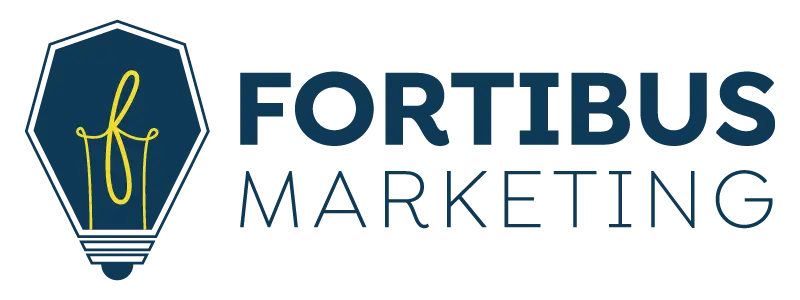Developing an Effective Marketing Strategy
A crucial part of growing any business is creating a marketing strategy, so you have a clear communication guide and your customers know exactly what your company is about. It directly outlines how you anticipate to promote your business and find new customers, and in turn, reach your goals and ROI (return on investment). You want to consciously show how your business fits into the market and how it stands out from your competitors. Remember, your marketing goals should directly correlate with the underlying and fundamental goals of your business (i.e. increasing revenue by 25% or increasing website traffic by 50%). The whole point is to put your business on a track that will push you forward into growth.
What is a Marketing Strategy?
Let’s start by defining strategy. It boils down to a step-by-step guide that is achievable and will help you reach a goal, in this case, acquiring more customers or sales. A market analysis is a very important first step to assess who your target audience is. This determines who your ideal customer is and gives an understanding of what they are looking for and what they expect from you. It’s counterproductive to spend time and money marketing to an audience that has no use or desire for your product or service. Consistently engaging in research to enhance and better your plan is a good best practice.
To dive deeper, there are four key elements to a marketing strategy. These include: promotion, product, place and price. Each piece has a specific purpose, so make sure you take your time and develop each one specifically to your business and brand.
Promotion refers to the actual method of how you market or sell your service or product. Defining your marketing budget and sales promotions, advertising, and public relations strategies are all things to consider! Are you going to rely heavily on publicity and public relations or are you going to push more for advertising and branding? It’s up to you to decide what will work best for your company and your target market.
Product refers to the actual service or product you are selling. How are you currently known as a company, and what do you want to be known for? This is your chance to establish the narrative for how others know your brand name and the services or products that you offer. Here you can expand on the actual functionality and quality of the product and explain and delve into any warranties or guarantees offered. This piece should be all inclusive of what a consumer needs to know about what they’re buying from you, including the ins and outs of the policies pertaining to the purchase.

Place refers to the actual delivery of your service or product to the buyer. If you sell a product, how will you distribute it? What are the logistics and order processing involved? If you offer a service, Where do you provide this service? Does your customer come to your location or do you go to theirs? Is your service mobile?
And, finally, price refers to the cost of your product or service. This will not only include the typical purchase price, but should additional fees or discounts you’re willing to offer. Do you offer seasonal pricing, wholesale pricing, or even a discount for bundling your products or services. Be sure to be reasonable, but to also offer a price that supports your reputation and knowledge. Don’t undersell yourself or your products.
On top of the actual “logistics” of the plan, you’ll want to be sure that you are incorporating your branding and identity into the strategy. Who you are and how you present yourself is just as important as what you sell. Consumers will become repeat customers when they appreciate your product or service and your “brand.”
Your Business is Unique, Right?
Always showcase what makes you and your business unique. Your strategy should include a unique selling proposition (USP). This is key in highlighting what makes you different from your competitors. Remember, the most important part of this entire strategy you’re creating is to show how your company can meet a need or solve a problem that exists for your target customer. Showing consumers that they need you, creates the supply and demand factor.
You don’t want customers to get bored when they’re learning about your company and why you’re the best, so use visuals to get your message to stick with your audience. Most people will look at an image and absorb that information before they ever read the actual content. Keep this in mind when designing your graphics and images for marketing. Also, be sure to remember to use consistent branding (design elements, colors, font styles, verbiage, etc.) across all platforms and distribution channels. For more info on branding, check out a recent blog we did here.
Platforms to Consider
You can tailor and post your visuals on various online platforms. Consider the options and decide where you’ll best reach your audience. Find out where YOUR consumers congregate, and publish there! These channels are where you can build your story and publish meaningful content that will attract and grow your audience. Some options include: Search Engine Optimization (SEO), Podcasts, Email Campaigns, Giveaways, Resources, Blogs, Social Media Channels, and Search or Display Ads.
Keep in mind, in order to use a platform effectively, it’s important to know how and what to use it for. For example, most businesses forget that social media is a place for you to share your story, not necessarily to sell your product or service. People relate to stories and engaging content. You want to give consumers insight into who you are as a company, and as people, so they feel compelled to work with you and your business. Being relatable and approachable can take you a long way in guiding potential customers to make a purchase.
What’s Next?
It may seem like a lot of research and planning, but all the work will pay off. Developing and implementing an effective marketing strategy is crucial in setting your business up for success and continuous growth. As you clearly define your marketing strategy, be sure to share it internally with your team, so every member of your company knows exactly what is expected and what the plan is for the future. Invite your whole team to participate in building something amazing with you.
If developing an effective marketing strategy feels overwhelming or you’d like some help, contact us to schedule a consultation. We’re excited to relieve some pressure and help you grow!





